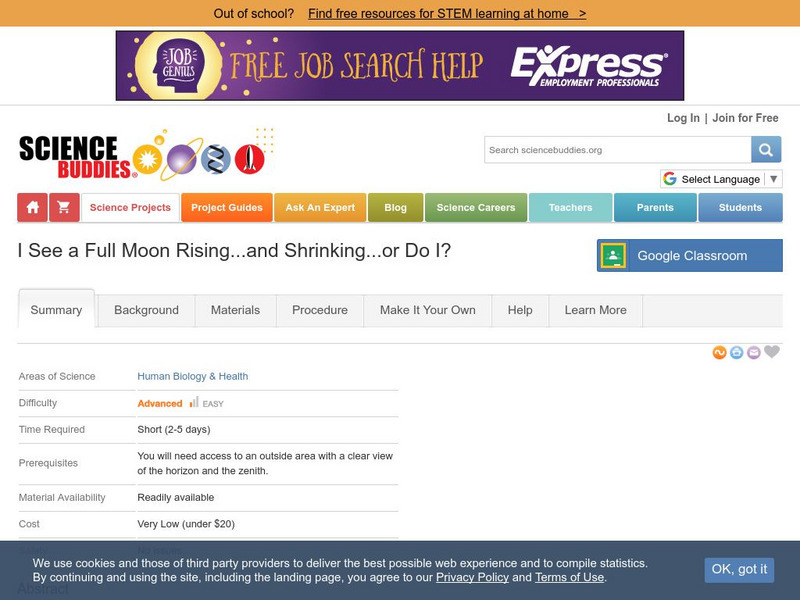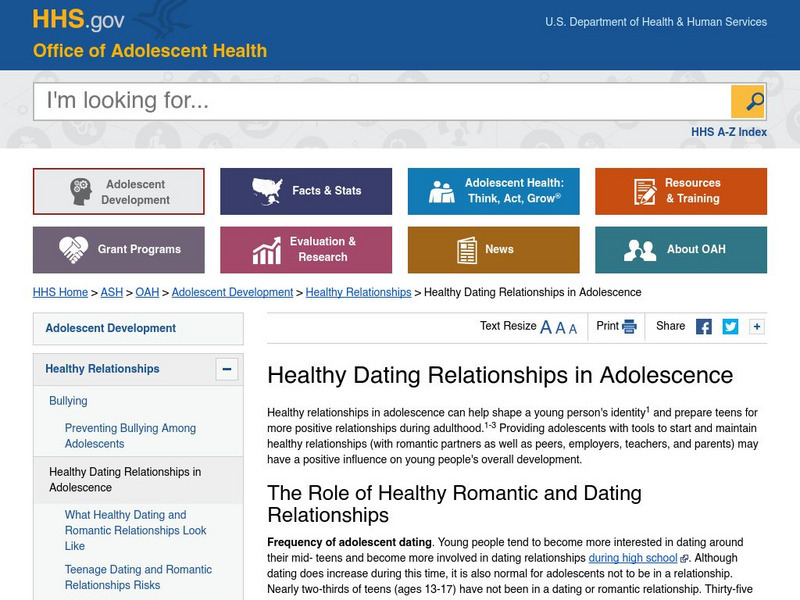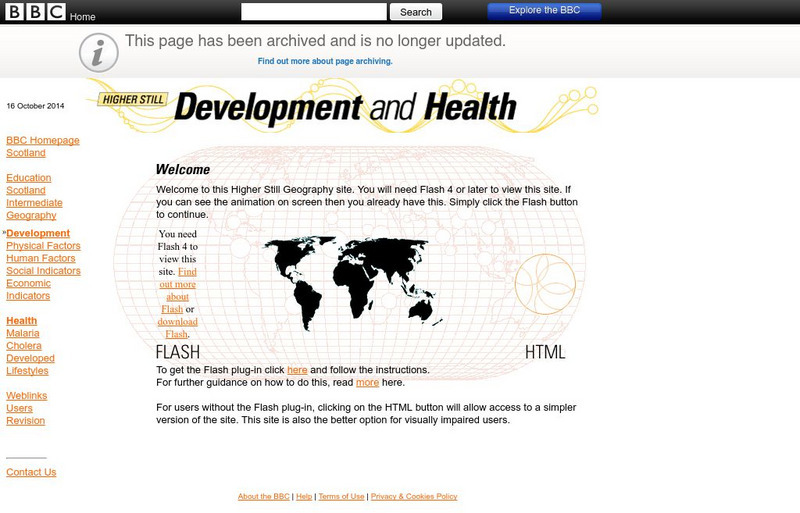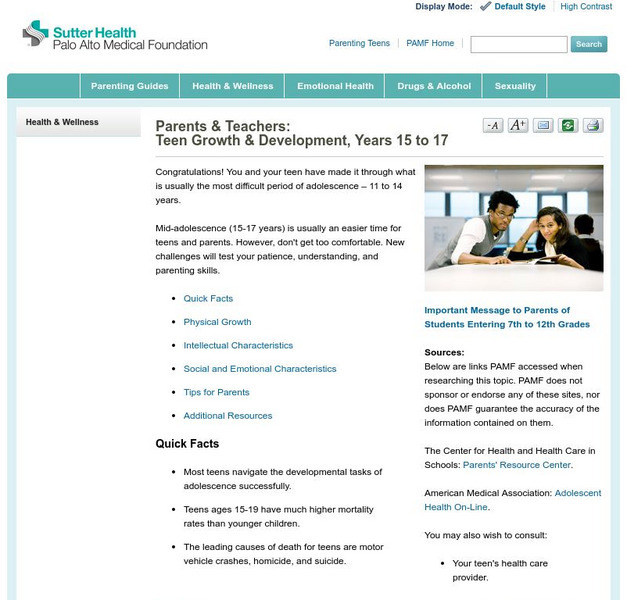Other
U.s. Department of Health & Human Services:contraceptive and Condom Use
This website contains multiple resources that explain types of contraceptives and condom use
Other
Story md.com: Infant and Newborn Development
When will my baby take his first step or say her first word? During their first year, babies start to develop skills they will use for the rest of their lives. The normal growth of babies can be broken down into the following areas:...
Other
Gapminder: Unveiling the Beauty of Statistics for a Fact Based World View
Gapminder collects hundreds of statistics related to global economic, health, and social development and analyzes the relationships between them across different countries and time (a few indicators go back to 1800).
Other
Revisiting and Updating the Multicultural Principles for Head Start Programs
Principle 8, published in 2008 by Early Childhood Learning and Knowledge Center of the U.S. Department of Health & Human Services, provides updates to the 1991 Multicultural Principles for Head Start Programs.
Other
Revisiting and Updating the Multicultural Principles for Head Start Programs
Principle 6, published in 2008 by Early Childhood Learning and Knowledge Center of the U.S. Department of Health & Human Services, provides updates to the 1991 Multicultural Principles for Head Start Programs.
US Geological Survey
Usgs: Effects of Human Activities
This site reviews the effects of agricultural development, urban and industrial development, drainage of the land surface, modifications to river valleys, and modifications to the atmosphere have on ground water and surface water.
Other
Health & Human Services: Development and History of u.s. Poverty Thresholds
A review of the development and history of the current, official poverty thresholds.
Science Buddies
Science Buddies: I See a Full Moon Rising, and Shrinking, or Do I?
The moon appears bigger at the horizon just as it is rising over the treetops, than it does later in the evening when it is overhead. This is because our perception of its size changes based on where it is in the sky. In this human...
Other
U.s. Department of Health & Human Services: Dating and Sex
This website contains multiple strategies that help adults and students discuss dating and talking about sex.
University of Arizona
University of Arizona: The Biology Project: Chemicals and Human Health
The University of Arizona's Biology Project provides background information on toxic materials and the body's responses as well as interactive tutorials with assessment questions and an activity in which students can actually acquire and...
AdLit
Ad lit.org: What Works in Comprehension Instruction
The National Reading Panel identified three predominant elements to support the development reading comprehension skills: vocabulary instruction, active reading, and teacher preparation to deliver strategy instruction. L .9-10.3...
BBC
Bbc: Development and Health
This interactive website is a lesson for students in determining the factors that divide developed and developing countries. Major health issues of each are also included. Archived.
Science Buddies
Science Buddies: Heart Health: How Does Heart Rate Change With Exercise?
Your heart starts beating before you are born and keeps right on going through your whole life. Over an average lifetime, the human heart beats more than 2.5 billion times. Keeping your heart healthy means eating right, not smoking, and...
Science Buddies
Science Buddies: Project Ideas: Don't Get Burned: Uv Index Throughout the Day
Sun tanning has a bad rap right now. Use a personal ultraviolet monitor to measure the UV index to prevent getting a sunburn. With this science fair project you will create a chart showing the UV ray measurement at different times of the...
Other
Federal Executive Departments
A complete list of the executive departments and their branches. Clicking on the name of the department will take you to that home page.
Science Buddies
Science Buddies: Heavy Metals and Aquatic Environments
You might know that lead can be toxic, and that you can get lead poisoning from eating or inhaling old paint dust. Lead is called a heavy metal, and there are other sources of heavy metals that can be toxic, too. Silver, copper, mercury,...
Other
Teenage Growth and Development: 11 14
During the ages of 11 to 14, children begin a sequence of changes that produces significant emotional and physical changes. This article outlines some of those changes and how parents can support these developments.
Other
Teenage Growth and Development: 15 17
As a teen approaches adulthood, a sense of autonomy has replaced some of the feelings of insecurity associated with physical development. This article looks at some of these new developments and provides parents with tips on how to...
Other
Copper Development Association: Copper and the Environment
This page provides information on copper and the environment, copper's role in human health, copper recycling, and other topics.
Other
Amnesty International Kids
Delve into the world of Amnesty International Kids in English or Spanish. This site introduces you to "the basics" of Amnesty International. It gives you a letter writing guide and some other activities to hook into.
Other
One World Guide: Bhutan
Complete background overview that helps you learn about the developing country of Bhutan. Read up on key issues such as poverty, human rights, politics, economy, environment, conflict, health, and development that are of concern....
Curated OER
Kids Health: What's the Right Weight for My Height?
Finding out your correct weight is difficult because everyone's body type is different. This site addresses that concern and answers questions that surround this issue. Links to related sites are also offered.
Other
Nichd: Spina Bifida
This site from the National Institute of Child Health and Human Development provides in-depth information about the birth defect, Spina Bifida.
Other
Noise: A Hazard for the Fetus and the Newborn
A research paper on the effects of noise pollution on the unborn and the newborn. Prepared by the American Academy of Pediatrics.

















